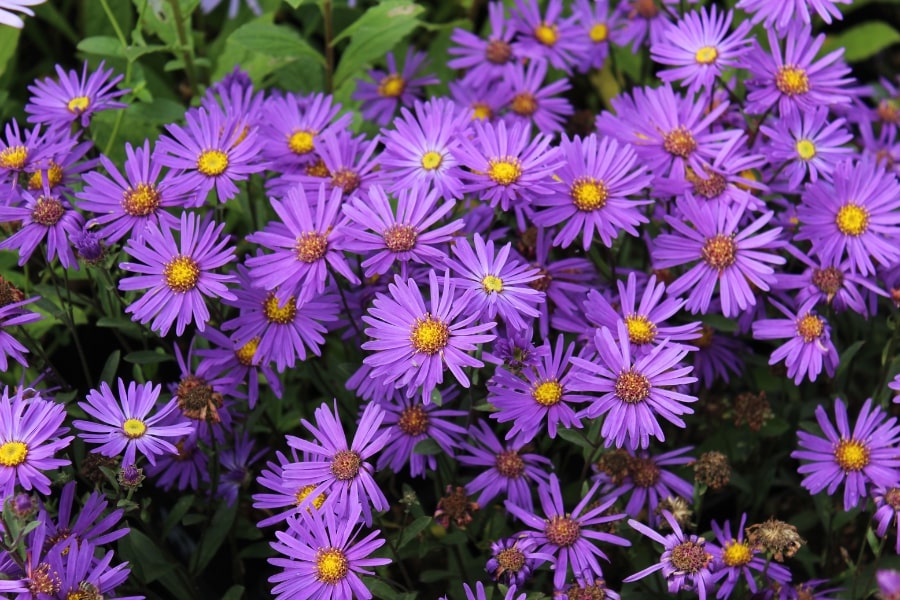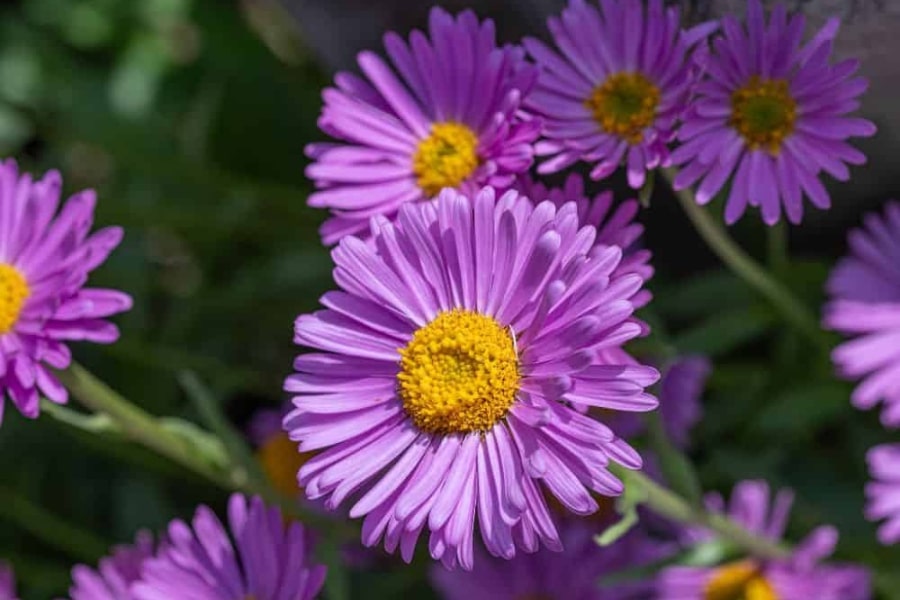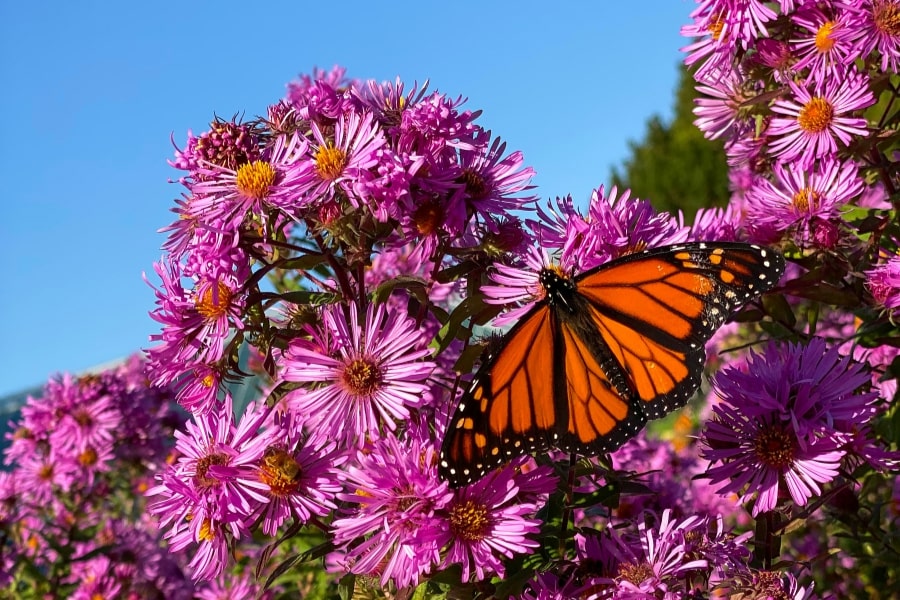Aster, belonging to the Asteraceae family, is a diverse and captivating group of flowering plants that add vibrancy and beauty to gardens and landscapes. Known for their striking daisy-like blooms and versatility, Asters are easy to grow and have become favorites for both beginner and experienced gardeners. These hardy perennials come in a wide range of colors, including shades of purple, blue, pink, and white, often with bright yellow centers that create a striking contrast. Blooming primarily in late Summer and Fall, Asters provide much-needed color when many other plants begin to fade, making them an essential addition to seasonal flower beds and pollinator gardens.

Our Selection of Aster
At Martin Garden Center, we carry 4″ Aster in the Summer and Fall. In 2025, we are growing two varieties: Woods Pink and Purple Dome. These will be available in the early Summer, but will not bloom until the Fall.
Growing And Caring For Aster
- Asters generally prefer full sun, but many varieties can tolerate partial shade. The ideal growing conditions may vary slightly depending on the specific species or cultivar of Aster you are cultivating.
- These resilient perennials thrive in well-drained soil. When establishing an aster bed, it’s essential to amend the soil with organic matter to ensure good drainage. This promotes healthy growth and helps prevent potential issues such as root rot.
- Asters benefit from consistent moisture, especially during dry periods. Watering should be done at the base of the plant to avoid wetting the foliage, reducing the risk of fungal diseases. Mulching around asters helps retain soil moisture, suppress weeds, and insulate the roots from temperature extremes.
- Regular deadheading encourages continuous blooming and maintains the plant’s overall appearance.
- Asters can be divided in late fall or early spring to rejuvenate the plant and control its size.
- Asters are known for their robust nature, and the presence of natural compounds in the plant can deter most pests. Despite their overall resilience, Asters can attract aphids, spider mites, and caterpillars. Regular inspection of the plants can help detect and address pest issues early.

Leaves and Flowers
The foliage of Aster has lance-shaped or serrated leaves arranged alternately along the stems. The leaves may vary in color from deep green to shades of bronze, adding visual interest even when the plant is not in bloom.
The flowers of asters are the true showstoppers. They resemble classic daisies and feature a central disk surrounded by vibrant, ray-like petals. Asters bloom in a spectrum of colors, including shades of blue, purple, pink, and white. The bloom time varies depending on the species, with some flowering in late summer and others extending into the fall. The abundance of blossoms attracts pollinators like bees and butterflies and injects a burst of color into the late-season garden.
One interesting characteristic of some aster varieties is their ability to change flower color as they age. For example, a bloom that starts as a soft pink may transition to a deeper shade as it matures, providing an ever-changing and dynamic display in the garden.

Common Uses in Gardening and Landscaping
- Perennial Borders and Mixed Beds: Asters are frequently utilized in perennial borders and mixed beds to add height, texture, and color. Their late-season blooms complement the earlier flowers in the garden, extending the visual interest well into fall. The wide range of colors allows gardeners to create harmonious or contrasting color schemes, enhancing the overall aesthetic appeal.
- Cut Flower Gardens: Asters make excellent additions to cut flower gardens, providing a fresh supply of blooms for floral arrangements. Their long stems and daisy-like flowers create charming bouquets that can bring the beauty of the garden indoors.
- Pollinator Gardens: Asters are valuable contributors to pollinator gardens, attracting bees, butterflies, and other beneficial insects. The nectar-rich flowers serve as a food source for pollinators, supporting their populations and promoting biodiversity in the garden.

Frequently Asked Questions
Is Aster a Perennial?
Yes, Asters are typically perennial plants. Perennials are plants that live for more than two years, and Asters fall into this category in the SC Upstate.
Is Aster Deer Resistant?
Asters possess a somewhat bitter taste and a strong aroma, which can make them less appealing to deer. However, while Asters are often considered deer-resistant, there are no guarantees that deer will not nibble on them, especially when other food sources are scarce.
Is Aster Invasive?
Aster encompasses a diverse genus with various species, some of which can indeed exhibit invasive tendencies in certain regions. While many aster species are well-behaved garden plants, some, particularly those native to North America, can spread rapidly under favorable conditions, potentially outcompeting native flora.
